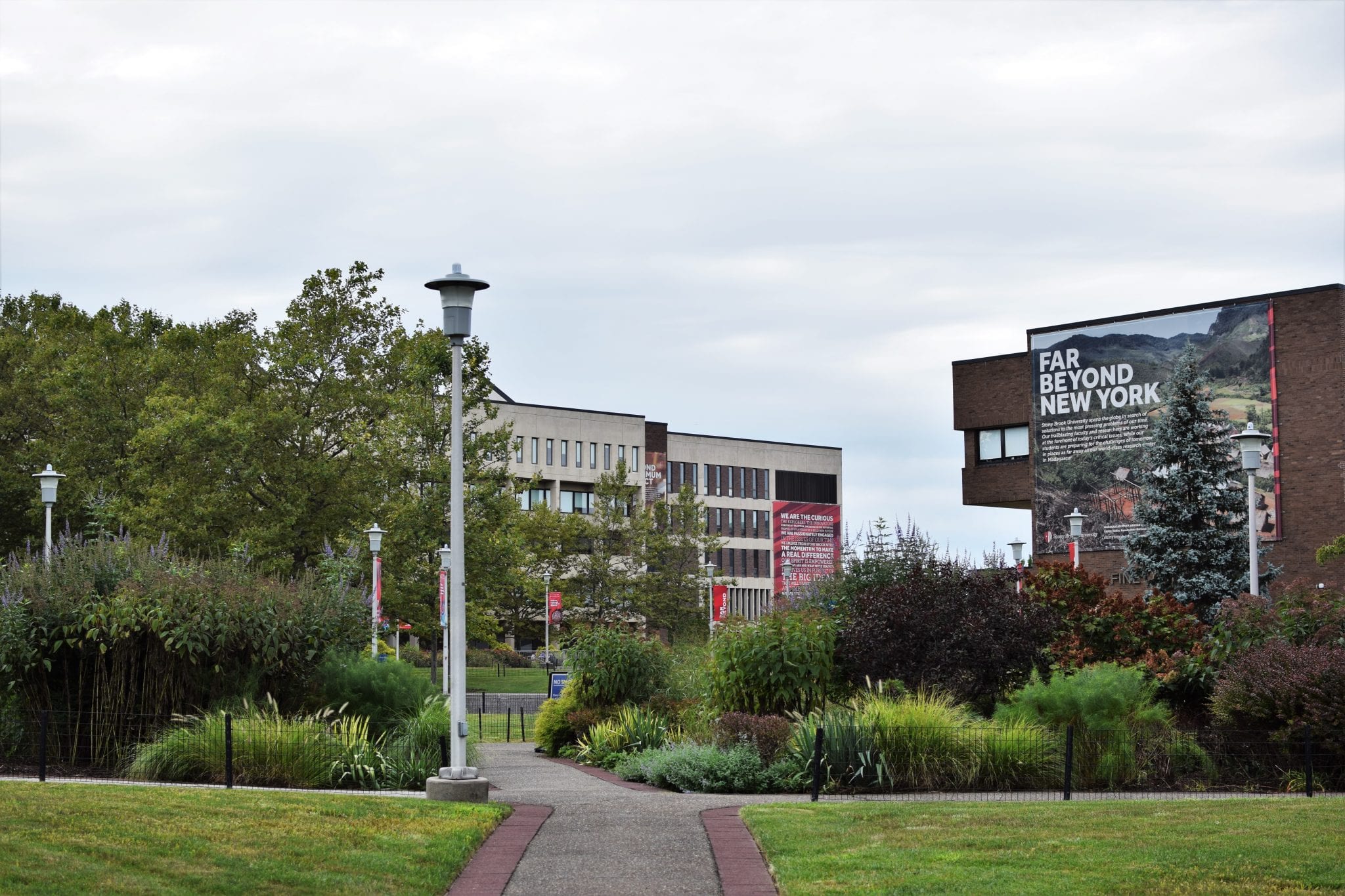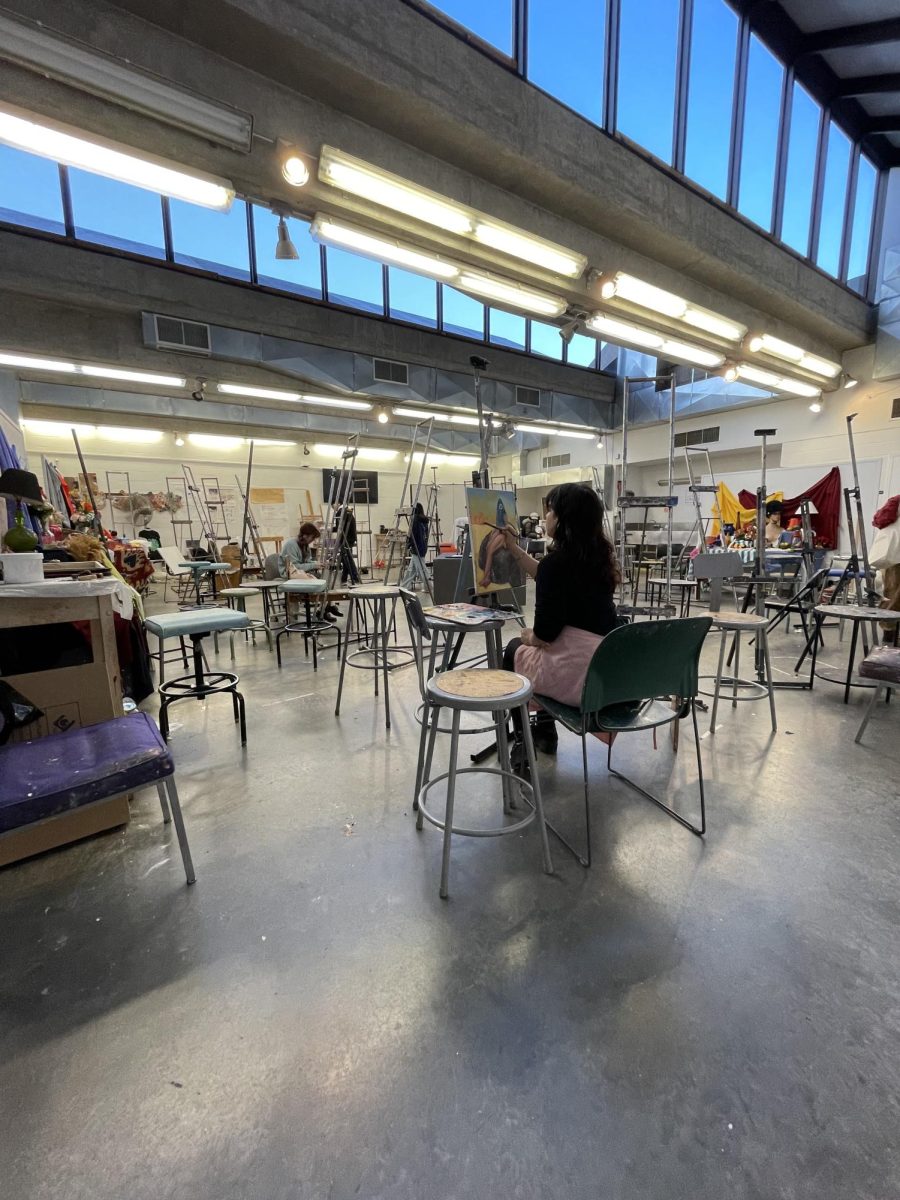
Michael Manning, a senior studio arts major at Stony Brook University, and art professor Nobuho Nagasawa, were both named the winners of a recycling sculpture design competition recently hosted by Port Jefferson Village.
The competition, which was to design a recycling container, was open exclusively to Stony Brook University’s Master of Fine Arts students, along with Nagasawa and her undergraduate sculpture class, in which Manning is currently enrolled.
“It was really surprising,” Manning said. “I felt like there was a lot stacked against me and when we were told the graduate art students would be participating, I didn’t have much confidence in winning at all.”
Manning did, however, have confidence in Nagasawa, his sculpting class professor.
“She does a lot of amazing work and is very creative and passionate about her art, ” Manning said. “It was nice to feel like I may have some of those qualities too.”
Nagasawa, with a world-renowned background in public art, worked alongside her students as they each came up with a visually engaging design that could function as a recycling container. She said that the planning process took about two months to complete.
Manning’s design titled “Shellfish Recycling Bin” resembles a giant crab standing with its pincers raised to the sky. Manning said it was inspired by the walks he and his grandfather used to take around Port Jefferson. He said he came up with many different ideas, from fish heads to coral reefs to sea anemones, but eventually settled on the crab.
“People insinuate that crabs are persevering, protective creatures, so why not have a creature that’s on land collecting trash and protecting the environment,” he said.
Nagasawa’s winning design was in the form of a sea turtle, a marine animal directly threatened by plastic waste.
“In my research I found that turtles often consume plastic bags because they look like jellyfish,” she said. “They are also attracted to the chemicals that emanate from the plastic and once it is locked into their digestive system, it can lead to death.”
She further voiced her concern at the amount of plastic entering the ocean and the threat it poses to not only sea turtles but all marine animals.
Over 300 million tons of plastic are produced every year, and at least 8 million tons of that will end up in the ocean, according to the International Union for Conservation of Nature (IUCN).
Nagasawa is not the only Stony Brook faculty member concerned about plastic waste.
Karen Levitov, the director and curator of the Staller Center’s Paul W. Zuccaire Gallery, stressed that more people need to be informed and focused on the environmental effects of single life plastics.
Levitov acted as a liaison between the Village and the university for the competition, and also sat on the selection committee that reviewed the 11 submitted proposals.
“There were so many amazing designs it was hard to choose,” Levitov said. “The creativity we saw had quite a range, from animal forms to something completely abstract or conceptual.”
Rebecca Kassay, village trustee and another member of the committee with a background in environmental conservation, also found it difficult to choose.
“The submissions were beyond what any of us imagined, which speaks to the skill of all the artists that submitted,” Kassay said.
Levitov explained that the committee followed a grading rubric that looked for a functional, visually compelling design that would “enliven the spirit of Port Jefferson” to recycle. Other requirements were to be within budget and easily maintainable.
On Oct. 26, they came to a decision on the two winning designs.
“For the crab sculpture, we liked the idea that it was snatching up items to recycle, and for the turtle design, we liked that it had a beautiful form that was appropriate and eye catching,” Levitov said.
Kassay also expressed her excitement and gratitude at having a sculpture by a world renowned artist such as Professor Nagasawa in Port Jefferson Village.
The committee also gave an honorable mention to Stony Brook student Marta Baumiller for her “Baskets of Change” design.
Nagasawa said her biggest challenge was finding a sculpture design that could also function as a recycling container and be easily emptied out by the Department of Sanitation. She settled on creating an adaptable turtle shell that opens up to provide quick access.
Nagasawa said she is aware of the irony of placing trash into the sea turtle’s stomach, and that she hopes it can be an “educational tool” for the community.
On Nov. 2, The Village of Port Jefferson trustees voted to appropriate a total of $2,600 from the Farmers Market and Maritime Festival Trust accounts to purchase the design rights for the two sculptures.
Kassay said the rest of the costs will come from grants or private sources, which she feels confident they will obtain.
Nagasawa’s sculpture is expected to be installed in Harborfront Park, and Manning’s sculpture is planned for Rocketship Park. The sculptures will be accompanied by plaques that credit the artists and provide information about the dangers of plastic waste and explain how the sculpture functions as a recycling container.
Kassay said the fabrication of the two sculptures is tentatively expected for Fall 2021.
She further emphasized that Port Jefferson Village is “always excited” to collaborate with Stony Brook University, because it is “such a wonderful wealth of talent and knowledge that’s just right next door.”
















